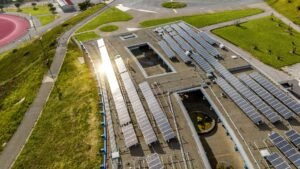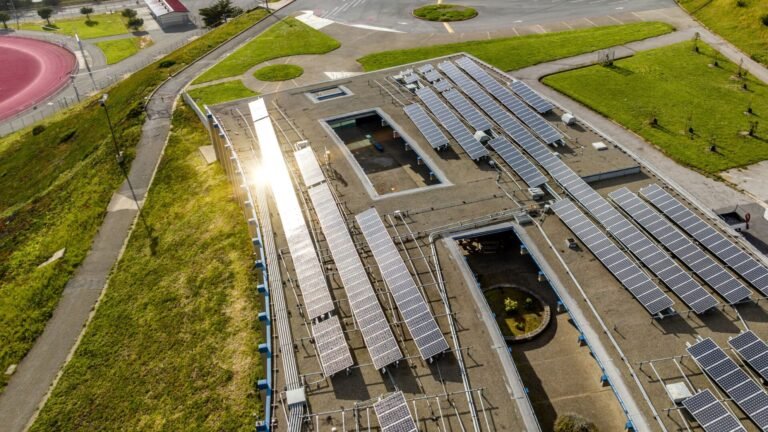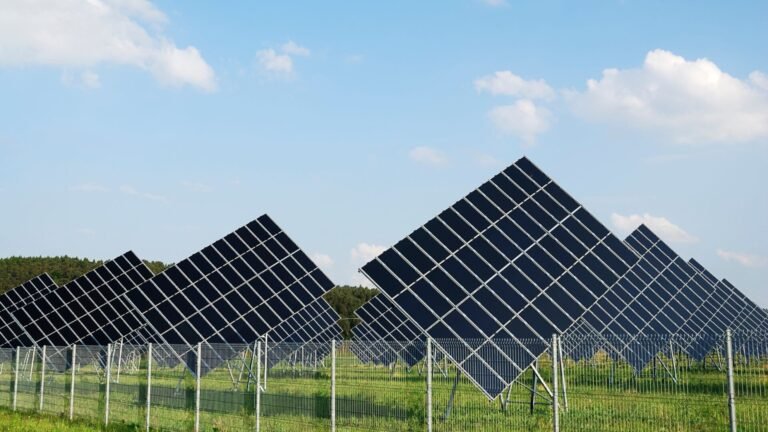As the world continues to seek sustainable energy solutions, the spotlight is on the revolutionary advancements in solar technology.
The year 2025 is poised to witness a significant leap in solar panel efficiency, promising to double the energy output compared to current technologies.
This blog delves into the exciting developments in 2025 solar technology, highlighting how these innovations will transform the renewable energy landscape.
2025 Solar Technology: A New Era in Renewable Energy
Solar energy has always held immense potential as a clean, renewable resource. However, the efficiency of converting sunlight into electricity has been a limiting factor.
Currently, the most efficient commercial solar panels operate at around 22% efficiency. The breakthrough in 2025 solar technology aims to push this boundary to unprecedented levels, potentially achieving efficiencies of up to 45%.
The Science Behind the Breakthrough
The key to this dramatic improvement lies in the development of multi-junction solar cells. Unlike traditional single-junction cells, which are made from a single layer of semiconductor material, multi-junction cells stack multiple layers, each designed to capture different wavelengths of sunlight.
This allows them to utilize a broader spectrum of solar energy, significantly boosting efficiency.
One of the promising technologies involves perovskite solar cells. Perovskites are a class of materials with exceptional light-absorbing properties.
Researchers have successfully integrated perovskite layers with silicon, the material used in most solar panels, to create tandem cells.
These tandem cells are the cornerstone of the 2025 solar technology revolution, combining the high efficiency of perovskites with the stability and established manufacturing processes of silicon.
Economic and Environmental Impact
The implications of this advancement are profound. Doubling the efficiency of solar panels means that the same amount of sunlight can produce twice the electricity.
This makes solar power more cost-competitive with fossil fuels, reducing the overall cost of solar energy installations.
The higher efficiency also means that fewer panels are needed to generate the same amount of power, lowering the space and material requirements for solar farms.
From an environmental perspective, the benefits are equally significant. Increased efficiency leads to a smaller carbon footprint for solar panel production and installation.
It also accelerates the transition to renewable energy sources, contributing to global efforts to reduce greenhouse gas emissions and combat climate change.
Key Players in the 2025 Solar Technology Revolution
Several companies and research institutions are at the forefront of this technological breakthrough. Notable among them is the collaborative effort between the National Renewable Energy Laboratory (NREL) and several leading solar manufacturers.
Their research has been instrumental in advancing multi-junction and perovskite-silicon tandem technologies.
Companies like SunPower and First Solar are also investing heavily in R&D to commercialize these advancements.
Their efforts are focused on scaling up production and ensuring that the new technology is both affordable and reliable for widespread adoption.
Challenges and Future Prospects
While the prospects for 2025 solar technology are exciting, several challenges need to be addressed. The long-term stability and durability of perovskite materials are still under scrutiny.
Researchers are working on improving the lifespan of these cells to match or exceed the longevity of traditional silicon panels.
Another challenge is the scalability of production. Transitioning from lab-scale success to large-scale manufacturing requires significant investment and optimization of production processes.
Ensuring that the new technology can be produced cost-effectively and at scale is crucial for its widespread adoption.
Despite these challenges, the future of 2025 solar technology looks promising. With continued research and development, these barriers are likely to be overcome, paving the way for a new era of highly efficient, sustainable energy.
Conclusion
The breakthrough in 2025 solar technology represents a monumental step forward in the quest for sustainable energy solutions.
By potentially doubling the efficiency of solar panels, this advancement promises to make solar power more cost-effective and environmentally friendly.
As we look towards a future powered by renewable energy, the innovations set to emerge in 2025 will play a pivotal role in shaping a cleaner, greener world.






